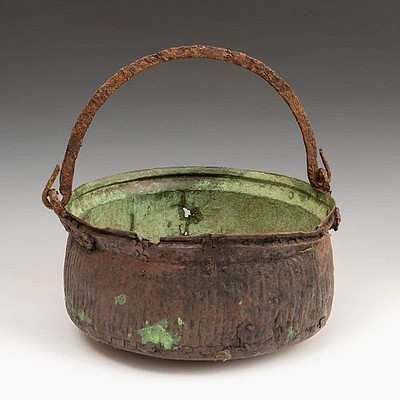Anthropomorphic figure from the Nayarit culture, Western Mexico, ca. 200-600 AD. Terracotta. Provenance: Private collection R.G., Lambertville, New Je
Lot 56
About Seller
Setdart Auction House
Carrer Aragó 346
Barcelona
Spain
Setdart Subastas was born in 2004 and is currently the first online art auction in Spain with solidity, prestige and reliability guaranteed by our more than 60,000 users. Setdart has a young, dynamic and enterprising team ready to successfully manage the purchase and sale of art works through custom...Read more
Categories
Estimate:
EUR€7,000 - EUR€7,500
$7,526.88 - $8,064.52
Absentee vs Live bid
Two ways to bid:
- Leave a max absentee bid and the platform will bid on your behalf up to your maximum bid during the live auction.
- Bid live during the auction and your bids will be submitted real-time to the auctioneer.
Bid Increments
| Price | Bid Increment |
|---|---|
| EUR€0 | EUR€10 |
| EUR€200 | EUR€25 |
| EUR€500 | EUR€50 |
| EUR€1,000 | EUR€100 |
| EUR€3,000 | EUR€200 |
| EUR€5,000 | EUR€500 |
| EUR€10,000 | EUR€1,000 |
| EUR€20,000 | EUR€2,000 |
| EUR€50,000 | EUR€5,000 |
About Auction
By Setdart Auction House
Dec 22, 2021
Set Reminder
2021-12-22 08:30:00
2021-12-22 08:30:00
America/New_York
Bidsquare
Bidsquare : Archaeology, Session I
https://www.bidsquare.com/auctions/setdart-auction-house/archaeology-session-i-8050
Setdart Auction House sofia@setdart.com
Setdart Auction House sofia@setdart.com
- Lot Description
Anthropomorphic figure from the Nayarit culture, Western Mexico, ca. 200-600 AD. Terracotta. Provenance: Private collection R.G., Lambertville, New Jersey, USA. Publications: Sotheby's New York, Monday November 22, 1999, Lot. 128. Attached thermoluminescence test. In good condition. Restored from original fragments. Breakage on the bottom, legs and legs of the stool. Measures: 56 cm (height). Statuette in round bulk made in terracotta, representing a seated female figure. It is a schematic representation but perfectly naturalistic in its position. She is shown with her legs open, arms bent and hands in contact with the trunk. The limbs are short and synthesized, while the face is oval and very expressive, with marked features (fine nose, slanted eyes) and ears adorned with voluminous tendrils. Special mention should be made of the treatment of the hair, tremendously individualized in each of its locks. The Nayarit culture developed on the west coast of Mexico between approximately 500 B.C. and 500 A.D., in an area of large wetlands and dense jungle. It maintained close relations with the neighboring peoples of Jalisco and Colima, with whom they shared many cultural characteristics. However, to this day we do not have much information about this culture, since few archaeological remains have been found, and those that are preserved come almost exclusively from private collections. The Nayarit is therefore one of the great unknown Mesoamerican cultures. It was an agricultural people whose society was articulated around the shaman, the main head of a religion in which the cult of the dead played a major role. With respect to their artistic manifestations, the ceramics stand out especially, being especially known their figurative statuettes, representations of quite naturalistic characters, presenting deformations and dressed with numerous jewels. Animal representations have also been found, although they are scarce. These figures probably had a votive function, related to the worship of the gods, since all the characters represented have a supernatural aspect due to the anatomical deformations.
- Shipping Info
-
In-house shipping available. Please inquire at admin@setdart.com.
-
- Buyer's Premium



 EUR
EUR CAD
CAD AUD
AUD GBP
GBP MXN
MXN HKD
HKD CNY
CNY MYR
MYR SEK
SEK SGD
SGD CHF
CHF THB
THB















